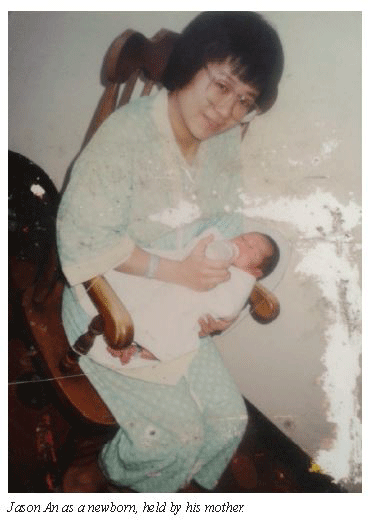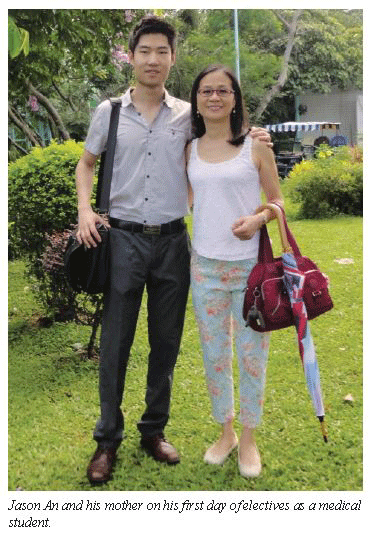Clinical clerk birthday note
RRRIIINNNGGG! The alarm bells sounded. Lunch was over and it was time to return to class. As it turned out, our grade 8 biology teacher had a unique activity planned for that afternoon. Our class assignment was to recognize and match each other with photos of ourselves as newborns, which we had been tasked to bring. As I held the photo of myself at 1-day old, a train of curiosities entered my mind. What was life like as an infant? Who was around me when I was born? And how exactly did I come into this world? That night my mother told me about how she had gone into hospital after her water broke, gone into labor, and eventually had a cesarean. "You were born on 16 June around 5 a.m., an early-morning boy," she told me with a nostalgic smile. Nevertheless, questions would occasionally find their way into my consciousness, sprinkling my high school and university years with curiosities of how I came into being.
Twelve years have flown by and I am in my final year of medical school. This is the year when students rotate through different specialties in the city's hospitals. It's June and I am working my way through obstetrics and gynecology. Although the labor and delivery unit can be exhilarating, it is also exhausting. Patient volumes, medical complications, and emotional complexities can quickly overwhelm, not to mention the regular 24-hour calls that take a steady toll on the body and spirit. Thus, I can only respond with a sigh when I find out I am scheduled to work the 24-hour shift on my birthday. Disappointed and slightly bitter, I think to myself, being on call on my birthday? Just my luck.
RRRIIINNNGGG! The pager sounds and I glance at the screen. "G1P0 ROM in L+D to see. 06-15-2014 23:40." I open my notes and start looking up rupture of membranes. After taking the patient's history and reviewing with the resident, we decide to induce contractions. As we explain the plan to the patient, my pager goes off again, this time summoning me to the emergency department.
It is 3 a.m. the next day, and while I am tired and drained, the emergency department bustles with energy and activity. My patient is a young female with abdominal pain suspected to originate in the pelvic organs. Hours go by, and as I review her ultrasound results my pager directs me back to the labor and delivery unit. I arrive just as the doctors and nurses rush a patient with a stricken expression into the operating room. One of the residents trailing behind takes a second to explain that this is the lady we induced earlier that night. She had been pushing for hours and there are now ominous signs on the fetal strip that the baby is in danger. I am to leave the girl with the abdominal pain in the emergency department until later. We're scrubbing in for the caesarean section now.
Moments later we stand in our gowns and masks next to the pregnant patient on the operating table. The resident hovers the scalpel just above the skin and anxiously peers at the fetal monitor. Finally, the anesthetist's voice from behind the sterile curtain breaks the uneasy silence. "She's under; we're good to go." The resident makes the incision into the abdomen with speed and confidence. Tissue layers separate; the glistening uterus appears. The myometrium is easily split by the sharp blade and inside the gushing womb we make out a full head of hair.
As the baby is lifted by the surgeon from its warm, bloody home of the past 9 months into the cool, sterile air of the operating theatre, I glance at the clock on the wall. It is 5:20 a.m., 16 June 2014. An early-morning boy. I come to the surreal realization that this is my birthday exactly 25 years ago, and this is how I was born.
The newborn takes his first breath and his shrill cry pierces the calm intensity of the operating theatre. As the baby is wrapped and warmed by the neonatologists, I wonder what this new life will become. He will learn to cry, crawl, walk, talk, laugh, and love. Perhaps one day this infant will grow into an inquisitive young boy and contemplate how he came into the world and who was there when he was born. Little will he know that a then–medical student would have become a doctor, one who treasured the greatest privilege in seeing this new life enter the world. A magical moment that will never be known to the infant, but one I will remember forever.
It was in the cold OR with blinding lights and shining steel that I began to comprehend where a mother's love for her child comes from. Nine months of carrying this weight, hours of excruciating pain and exhaustion, and the unspeakable joy when she holds a new life--an extension of her own--in her arms. It is in these moments after birth that the bond between mother and child is deeply felt and forged for a lifetime. And it was that hour on my birthday when it dawned on me that there is nothing I can ever do to thank and repay my mother for what she has done for me and given me--life.
As I bike home after this long night, I contemplate the larger journey that I have embarked on. I realize that the true value of our medical education lies not only in the knowledge gained, but in the unique opportunities we encounter in this profession. Opportunities to be involved in families' lives in brief but powerful moments, to marvel on the miracle of birth, reflect on the tragedy of death, and wonder on the delicate balance of life in between.
Being on call on my birthday? Perhaps it was just my luck.
 |
 |
hidden
This article has been peer reviewed.
hidden
Mr An earned his honors bachelor's degree in neuroscience and cell systems biology at the University of Toronto and is currently in his final year of medical school at the University of Calgary. Outside of his studies, Jason enjoys playing the guitar, salsa dancing, and working on a global health project with VIDA University of Calgary, a medical aid student organization he founded. Mr An was inspired to write this article while completing a medical school elective at St. Paul's Hospital in Vancouver.
